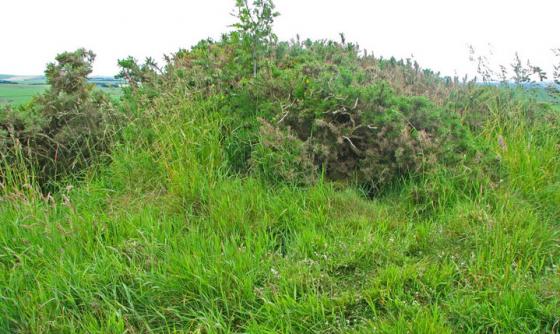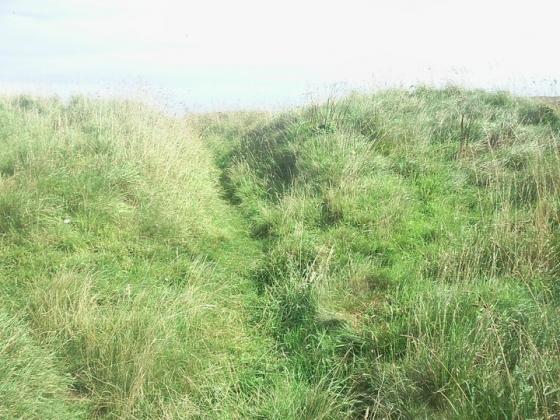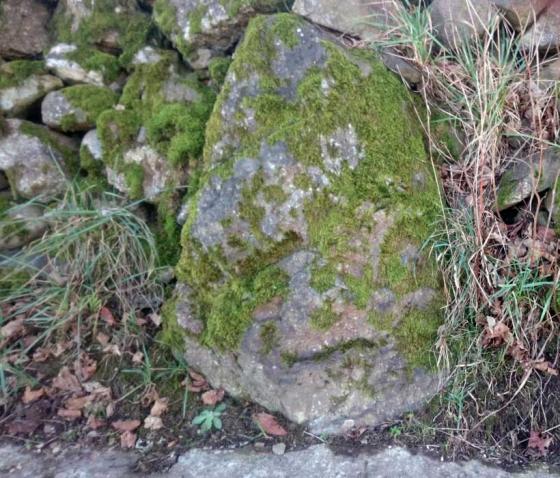
The light was all but gone by this time.

The light was all but gone by this time.

15/01/2012 – Clochforbie

15/01/2012 – Clochforbie


15/01/2012 – Parked car at entrance to Mid Cloch Forbie farm (NJ 7965 5869). Through gate and walked SE down field edge to stone. Just the recumbent left (the Gray Stone). Nice stone and the views from it are great, Ben Rinnes and beyond. No voice from under the stone for me either but I did say hello just in case.
The remaining recumbent, with chokes underneath, can be found in field near to the entrance to Clochforbie farm. Leave the A98, east of Macduff, at the Gardenstown junction turning north. The stone, also known locally as the Gray Stone, can be seen from the road. The other stones have long gone thanks to field clearance and the building of the road. I heard no noises when I looked below the stone but my phone ringing gave me one hell of a scare!!
Visited 28/2/09.
(one of my pupils thinks it looks like a whale!)
The story of a bull’s hide filled with gold is connected with many stones. At its simplest it is found at the Binghill stone circle on Deeside, at Lulach’s Stone near Kildrummy, at a standing-stone at Glenkindie close by a branch road to Towie, and at the Muckle Stane o’ Clochforbie, near the steading of the farm of that name. The last may be a broken recumbent stone, but there is nowadays no standing-stone near it. In this case also an attempt was once made to remove the treasure, but the great efforts made to shift the stone proved fruitless, and a warning voice having been heard from beneath the depths of the stone to command ” Let be!” the advice was taken and the stone has remained undisturbed ever since.
From: Ritchie, J., Folklore of Aberdeenshire Stone Circles, in Proc. Soc. Ant. of Scotland, LX, 1926, pp304-313. )
King Edward – Aberdeenshire
The Story Of A Parish – Gray Stone Of Clochforbie
“This circle stood at an elevation of 420 feet above sea level, two miles north of the circle at Auchnagorth, and the recumbent alone remains. This type is peculiar to the shires of Aberdeen, Banff and Kincardine. The recumbent stone was flanked by two pillars, and its situation was invariably on the south-west side of the circle. The whole enclosed a central ring cairn, and when examined pottery and cremated burials have been found. An interesting utensil, peculiar to the recumbent stone circle, is the handled stone cup or ladle found in them, confirming the belief that these circles were in use in the Iron Age.
The recumbent stone is situated on the farm of Clochforbie, belonging to Mr. Andrew Smith. It is within a few feet of the road separating Clochforbie from the crofts of the same name. It is clear from the position of the recumbent stone, that the stones comprising the circle were removed to bottom the road under construction at the beginning of the 19th century.
The recumbent stone is a whinstone boulder 12 feet in length, 4 feet 10 inches broad at the middle, and 3 feet 3 inches at its greatest height. It rests on several small stones and makes contact with the ground for only five feet. The is of irregular shape and flat on the top. Its weight is 4 tons and a quarter, but stones of this type have been known to weigh up to 30 tons.”
James Godsman 1952.
Coles thought this to be the recumbent of an otherwise destroyed stone circle. When last visited in 1965, a stone wedge under the boulder would seem to support this (arf).










































































